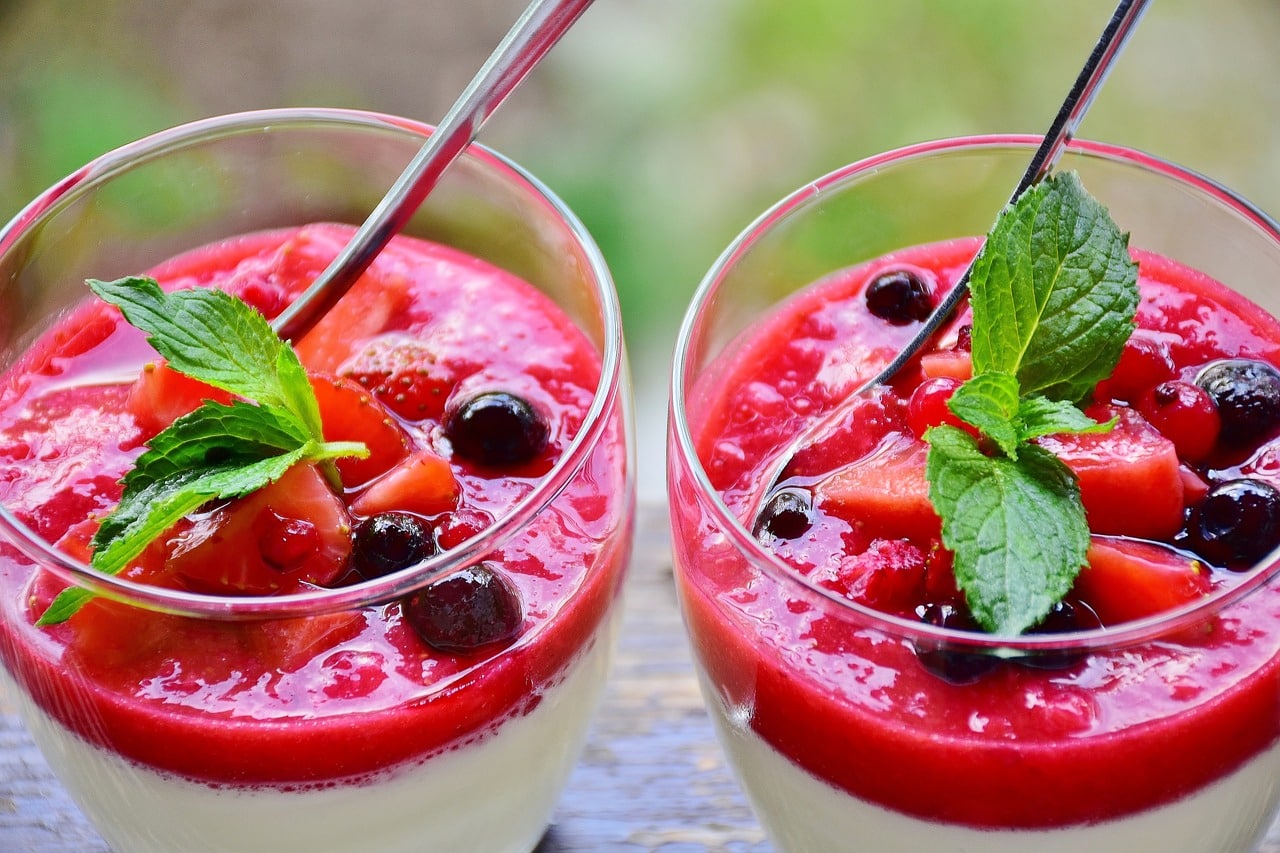What’s the Secret to a Silky Smooth Panna Cotta?

When you’re craving something sweet and creamy, panna cotta is the dessert to choose. This Italian classic, made from cream, sugar, and gelatin, encapsulates the simplicity and sophistication of Italy’s culinary tradition. But what’s the secret to achieving that silky, quivering texture? Don’t fret; it’s not as mysterious as it may seem. The secret lies in the careful balance of ingredients and heat.
The Magic of Gelatin
Gelatin is not just a fun word to say. It’s the key to creating that distinctive wobble in your panna cotta. Derived from collagen, gelatin is a protein that gives structure to many dishes. When you add it to your cream and sugar mixture, it acts as a binding agent, causing it to set into a firm, but not too stiff, texture.
A voir aussi : What Are the Essentials for a Classic American BBQ?
To use gelatin, combine it with water in a ratio of 1:5. This initial step, known as blooming, lets the gelatin absorb water and swell. After about 10 minutes, you’ll have a jelly-like substance that can be melted and added to your cream mixture.
However, be careful with the heat. Gelatin loses its setting power if boiled, so always add it to a warm mixture and not one that’s on the heat. Moreover, avoid incorporating too much gelatin. Doing so will result in a rubbery texture, far from the smooth and creamy panna cotta you crave.
A découvrir également : How to Create an Authentic Indian Samosa with a Healthy Twist?
The Delicate Dance of Cream and Milk
The next integral part of your panna cotta recipe is the cream and milk. These two ingredients contribute to the dessert’s luxurious mouthfeel and subtle taste. Most traditional recipes call for heavy cream, although you can use a combination of cream and milk for a lighter result.
Start by heating the cream or milk (or both) on a medium heat, but be mindful not to let it boil. The aim here is to warm the mixture, not scorch it. Once the cream has heated to the point where it’s almost simmering, it’s time to add your sugar, stirring continuously to ensure it dissolves completely.
Once your sugar has dissolved, you can add your bloomed and melted gelatin to the mix. Stir well to ensure that the gelatin is evenly distributed throughout the cream mixture. The cream, milk, and gelatin dance should be one of gentle heat and constant stirring for the best results.
The Sweetness of Sugar and Vanilla
Sugar and vanilla are the unsung heroes of your panna cotta. They add that sweet, comforting flavor that makes this dessert so irresistible. The amount of sugar you use will depend on your preference for sweetness, but a general guideline is to use 1/4 to 1/2 cup of sugar for every two cups of cream or milk.
Vanilla, on the other hand, adds a subtle aroma that enhances the dessert’s overall flavor profile. You can use vanilla extract or scrape the seeds from a vanilla pod for an even more intense flavor. Remember to add your vanilla after you remove the cream mixture from the heat to retain its full aroma.
The Finishing Touch: Sauce and Fruit
The final touch to your panna cotta is the sauce and fruit. A simple fruit sauce, made by simmering fresh fruit with a bit of sugar and water, can add a delightful contrast to the creamy panna cotta. You could also opt for a rich chocolate or caramel sauce if desired.
To make a fruit sauce, combine a cup of fresh fruit (berries work great) with 1/4 cup of sugar and a few tablespoons of water in a saucepan. Simmer until the fruit breaks down and the sauce thickens slightly. Allow it to cool before spooning over your set panna cotta.
Remember, the key to a perfect panna cotta is balance – in ingredients, in heat, and in sweetness. It’s about creating a dessert that is both luxurious and refreshing, a treat that melts in your mouth and leaves you craving for more. So, go ahead, give this recipe a try. Let the magic of panna cotta unfold in your kitchen.
The Versatility of Vanilla: Bean VS Extract
Vanilla is synonymous with anything sweet and delectable. It’s the secret ingredient that adds a subtle, yet divine flavor to your panna cotta. It’s a delicate balance of using either a vanilla bean or vanilla extract, each of which will shape the flavor of your dessert in a unique way.
A vanilla bean is the original source of vanilla flavor. It’s a small, slender pod filled with tiny black seeds that pack a punch of intense flavor. Using a vanilla bean in your panna cotta recipe will give it an authentic, robust vanilla taste. To use it, split the pod lengthwise and scrape out the seeds with the back of a knife. Add these seeds to your warm cream mixture and let them steep, enabling the cream to absorb all the flavors.
On the other hand, vanilla extract is a more accessible and convenient option. It’s made by steeping the beans in alcohol, creating a liquid that’s rich in vanilla flavor. The advantage of using vanilla extract is that it’s straightforward to use as you just have to pour in the desired amount. However, remember to add it off the heat to prevent the alcohol from evaporating and losing its flavor.
Whether you decide to use a vanilla bean or vanilla extract in your vanilla panna cotta, either way, you’ll end up with a dessert that’s rich, fragrant, and satisfyingly sweet.
The Perfect Panna Cotta: Achieving the Ideal Texture
Achieving the perfect texture in your panna cotta is a balancing act. The right ratio of cream milk to powdered gelatin or leaf gelatin is crucial. Panna cotta should be velvety smooth, rich, and just firm enough to hold its shape when unmolded.
When it comes to the cream component, most traditional panna cotta recipes call for heavy cream or a mixture of whipping cream and milk. The high fat content in these creams contributes to the luxuriously smooth mouthfeel of the dessert. However, if you prefer a lighter texture, a combination of half-and-half or whole milk can be used. This can also be a healthier option if you are watching your fat intake.
The gelatin’s role is to set the panna cotta, giving it its iconic wobble. Powdered gelatin is most commonly used due to its easy availability and convenience. However, leaf gelatin is often considered superior in terms of quality and purity. If using leaf gelatin, remember to soak the leaves in cold water for a few minutes before squeezing out the excess water and adding them to the warm cream mixture.
Be mindful not to overdo the gelatin, or you’ll end up with a texture resembling jelly rather than the silky smoothness that is the hallmark of panna cotta. The perfect panna cotta should have a delicate wobble, not a firm jiggle.
Conclusion: Enjoying Your Panna Cotta Creation
Now that you have the secrets to a silky smooth panna cotta, it’s time to savor your creation. Whether you’re making this delightful dessert for a special occasion, such as Valentine’s Day, or just because, it’s sure to impress.
Serve your panna cotta with a vibrant strawberry sauce or fresh berries for a hint of tartness that complements the creaminess of the dessert perfectly.
Remember, the beauty of panna cotta lies in its simplicity. It’s a dessert that’s elegant yet easy to make. Use quality ingredients and pay attention to the balance of flavors and textures. After all, panna cotta is not just a dessert; it’s an experience. Enjoy the process of making it and even more so, the moment of indulging in it!
